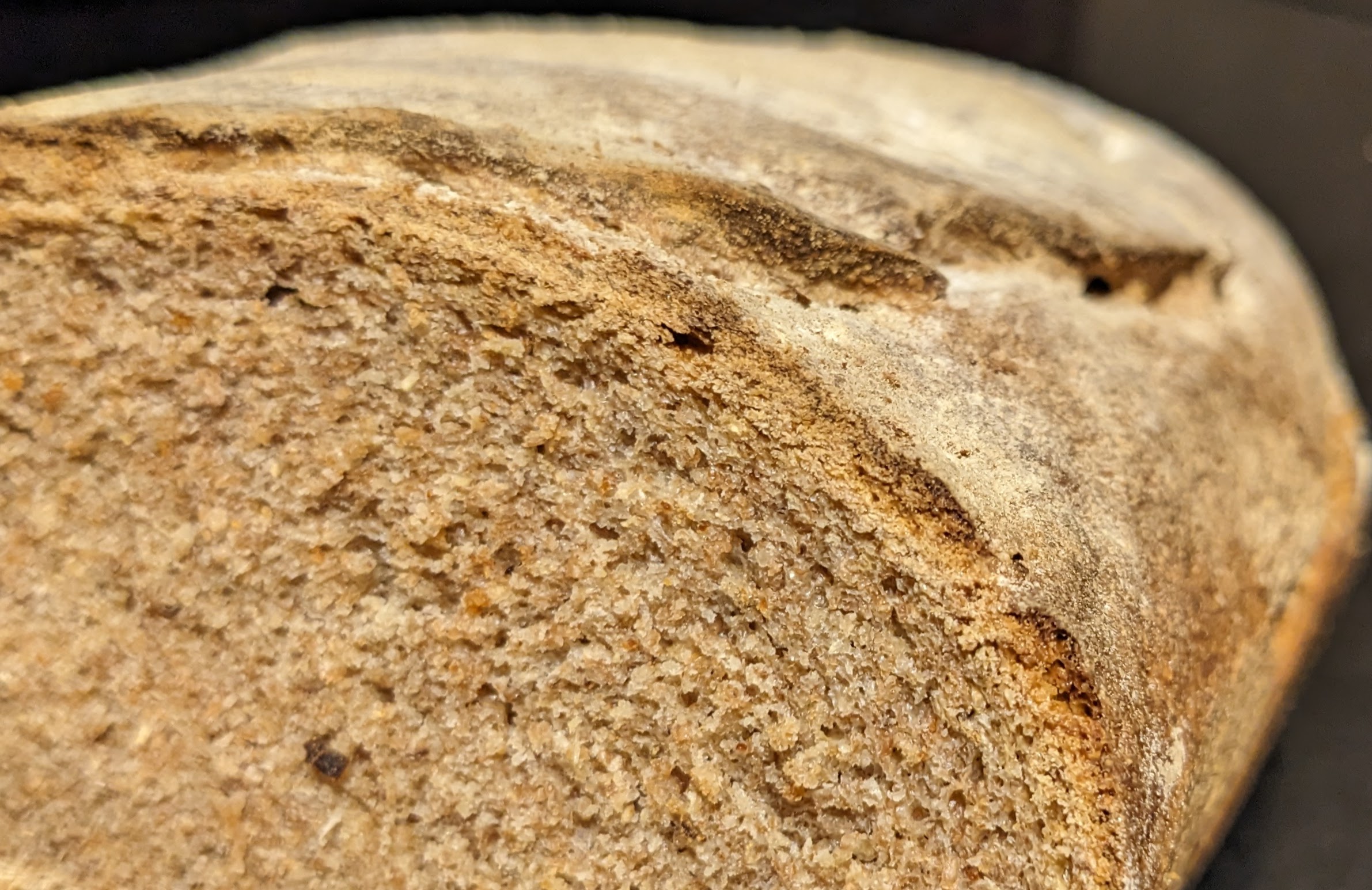Winter Bread – Rye & Spelt Loaf
With the evenings drawn in, and the mornings dark, it’s the time of year for hearty things to eat. This rye and spelt loaf definitely fits the bill with an earthy, nutty flavour.
Spelt and Rye are considered older types of flour, not as common as it was, but easily findable in a larger shop or specialist provider. Both are high in fibre and other good things like iron and magnesium. More common in central and eastern Europe, they’ve arrived here on the back of cultural exchange and the growing awareness of healthy eating.
I’ve really wanted to try some different types of flours and breads, and after reading ‘Classic German Baking’ by Luisa Weiss, the idea of rye appealed to me. There’s a great shop nearby that does a great range of flours, including spelt and rye (which most shops don’t stock). I found this particular recipe in Paul Hollywoods’ book ‘Bread’, and gave it a go.

Penfold: “Er, I think you’re standing too closely Chief”
First off, you’ll need to start this at least five hours or preferably the evening before baking as it uses a starter, called a sponge (nothing to do with cake. It just looks sponge-like when done). Yes, some planning required. I’ve left the starter in the kitchen overnight, and baked the next day. I haven’t let it ferment longer than about 17 hours, so I don’t know what the upper limit is, it probably depends on how warm your room gets. Paul Hollywood advises a minimum of 5 hours. I’ve made this twice, and both times I’ve left it overnight. Having said that, the flavour is strong but the second rise never got much over the top of the tin really. Not to despair, it turned out well both times.
What would I do differently? For starters, I’m using old instant yeast that’s been in the press for longer than it’s ‘Best Before’ date [Shocking! – Ed]. This might be reducing the rise a little, so either use fresher yeast or add more to compensate. I’ve no idea how much more, go with your gut. I tried it on another bread which I’ll talk about next (a Pain de Campagne, seriously tasty) and added about half a teaspoon extra (~2.5 – 3grams). Seemed to work, so will try this as I don’t like wasting anything.
It being Christmas, I’d also made a classic French bloomer to bring up to the gathering for the evening turkey and ham sandwiches on Christmas day (which was devoured in quick time), so the second loaf ended up being kept for a week in a box before being even cut for the first time, which did it no harm and was just as good toasted with butter and jam. In the end, it lasted almost two weeks, so it’s a good keeper if there’s other breads around that need faster eating. Of course, you can always freeze it – most breads freeze well in my experience. Pre-slice it before you freeze for handiness, or you’ll have to defrost the whole loaf. When fresh, it’s great covered in butter with some good salami or a full flavoured cheddar and a drop of mustard which certainly healthy for the soul in the middle of an Irish winter. Pairs well with a nice cup of tea.

Enjoy!

